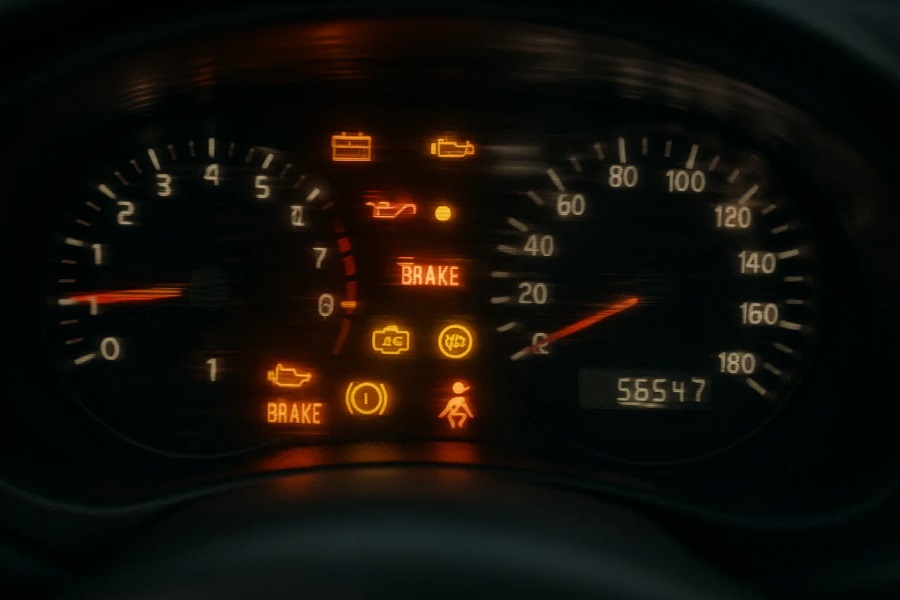Flickering dashboard lights can be an annoying and potentially alarming issue for any vehicle owner. Not only do they distract you while driving, but they may also signal underlying electrical or mechanical problems. Understanding the root causes and how to address them can save you time, money, and stress. Here are the top reasons your dash lights are flickering and practical solutions to fix them.

Faulty Alternator
The alternator is responsible for charging your car’s battery and powering electrical components, including the dashboard lights. A failing alternator may produce inconsistent voltage, causing the dash lights to flicker.
Symptoms:
- Dimming or flickering lights, especially when idling or accelerating.
- Battery warning light on the dashboard.
- Electrical accessories (e.g., radio, power windows) malfunctioning.
Fix:
- Test the alternator: Use a multimeter to check the alternator’s output voltage (typically 13.5–14.5 volts when the engine is running).
- Inspect the drive belt: A loose or worn belt can affect alternator performance. Tighten or replace it if needed.
- Replace the alternator: If the alternator is faulty, have it replaced by a professional mechanic. Costs typically range from $200 to $600, depending on the vehicle.
Weak or Failing Battery
A weak battery can cause inconsistent power delivery to the dashboard, leading to flickering lights. This is common in older batteries or those not properly maintained.
Symptoms:
- Flickering lights when starting the car or using high-power accessories.
- Slow engine cranking or difficulty starting.
- Battery age exceeding 3–5 years.
Fix:
- Check battery voltage: A healthy battery should read around 12.6 volts when the engine is off. If it’s below 12.4 volts, it may need replacement.
- Clean battery terminals: Corrosion on terminals can disrupt power flow. Clean them with a wire brush and apply anti-corrosion spray.
- Replace the battery: If the battery is old or tests poorly, replace it. Most batteries cost $100–$200.
Loose or Damaged Wiring
Loose, frayed, or damaged wiring in the dashboard or electrical system can cause intermittent connections, resulting in flickering lights.
Symptoms:
- Flickering worsens when hitting bumps or turning.
- Specific dashboard lights flicker while others remain steady.
- Burnt fuse or tripped circuit breaker.
Fix:
- Inspect wiring harnesses: Check for loose connections or exposed wires behind the dashboard or under the hood.
- Replace damaged wires: Use automotive-grade wiring and connectors to repair any frayed sections.
- Consult a professional: Electrical diagnostics can be complex, so consider a mechanic or auto electrician for thorough inspection. Expect diagnostic fees of $50–$150.
Faulty Instrument Cluster
The instrument cluster itself may be malfunctioning due to internal issues, such as a failing circuit board or loose connections within the cluster.
Symptoms:
- Flickering affects all or most dashboard lights.
- Gauges (speedometer, tachometer) behaving erratically.
- No other electrical issues in the vehicle.
Fix:
- Reset the cluster: Disconnect the battery for 10–15 minutes to reset the system.
- Inspect connections: Ensure the instrument cluster’s wiring harness is secure.
- Replace the cluster: If the issue persists, the cluster may need replacement, which can cost $300–$800, including labor.
Failing Voltage Regulator
The voltage regulator, often integrated into the alternator, maintains a steady voltage supply. A malfunctioning regulator can cause voltage spikes or drops, leading to flickering lights.
Symptoms:
- Flickering lights at specific RPMs or when using electrical accessories.
- Overcharging or undercharging battery (check with a multimeter).
- Alternator issues despite a relatively new unit.
Fix:
- Test the regulator: A mechanic can test the regulator’s performance using specialized equipment.
- Replace the regulator: If separate from the alternator, replace the regulator (cost: $50–$150). If integrated, the entire alternator may need replacement.
Grounding Issues
A poor ground connection in the vehicle’s electrical system can disrupt current flow, causing dash lights to flicker.
Symptoms:
- Flickering worsens with specific actions (e.g., turning on headlights).
- Random electrical glitches in other systems.
- Corrosion or loose ground straps.
Fix:
- Locate ground points: Common ground points are near the battery, engine block, or chassis. Check for corrosion or loose bolts.
- Clean and tighten: Use a wire brush to clean ground connections and ensure they’re securely fastened.
- Replace ground straps: Damaged straps should be replaced to restore proper grounding (cost: $20–$50).
Preventive Tips to Avoid Flickering Dash Lights
- Regular maintenance: Check your battery, alternator, and wiring during routine vehicle inspections.
- Avoid overloading the electrical system: Limit aftermarket accessories that draw excessive power.
- Monitor warning signs: Address dimming lights, slow cranking, or other electrical issues promptly to prevent escalation.

When to Seek Professional Help
While some fixes, like cleaning battery terminals, are DIY-friendly, complex issues like wiring problems or alternator failure often require professional expertise. If you’re unsure of the cause or lack the tools, consult a certified mechanic or auto electrician. Diagnostic fees typically range from $50 to $150, but catching issues early can prevent costly repairs.
Conclusion
Flickering dashboard lights are more than just a nuisance they’re a signal that something in your vehicle’s electrical system needs attention. By identifying the cause, whether it’s a faulty alternator, weak battery, or grounding issue, you can take targeted steps to fix the problem. Regular maintenance and prompt action will keep your dashboard lights steady and your vehicle running smoothly.


